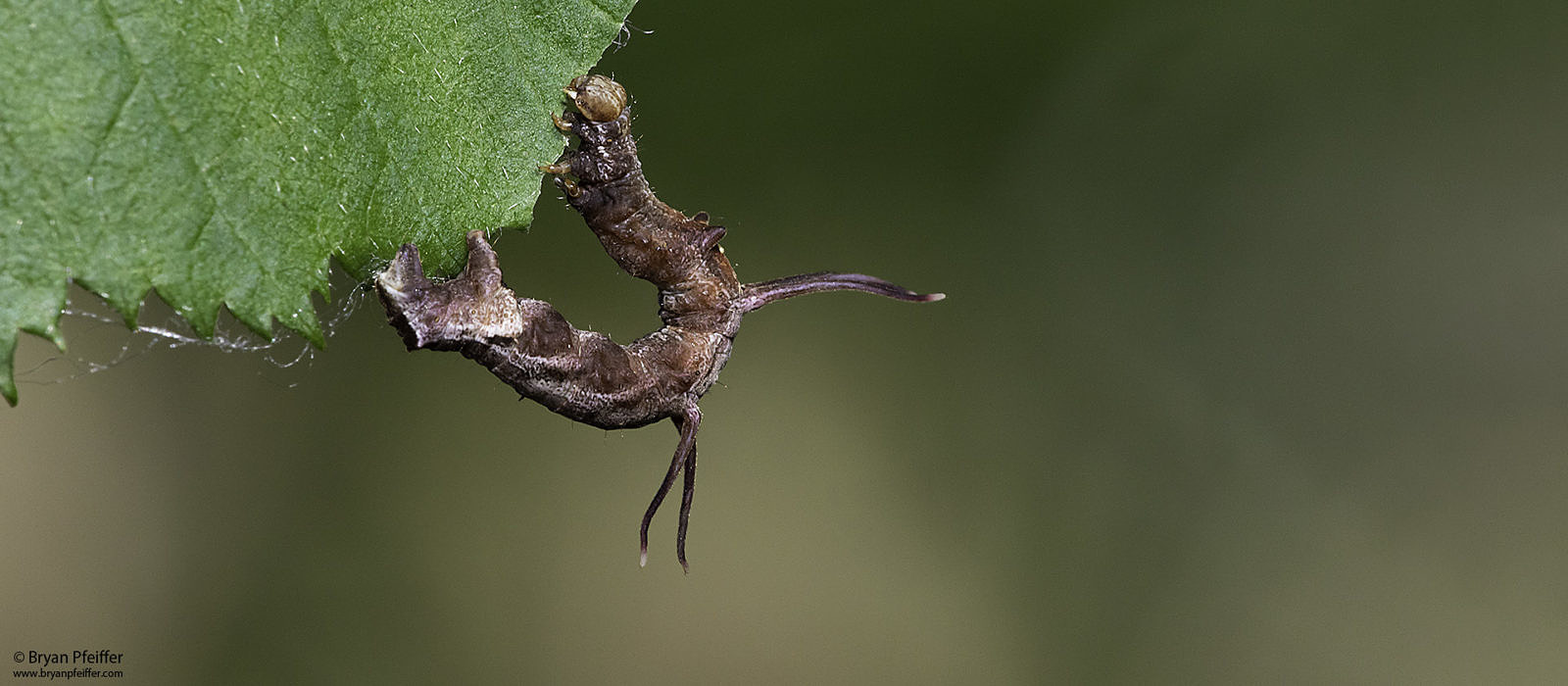
The Spineless Speak Up
Image: Horned Spanworm Moth (Nematocampa resistaria) / © Bryan Pfeiffer
Spineless? Really? Well, okay, only in the sense that three caterpillars I encountered this month are invertebrates — they got no backbone. Instead, their hardware — and their mettle — lie on the outside of their bodies … and in their behaviors.
These are but three among millions of invertebrates, each an example of how 400 million years of evolution have made insects a force of their own on planet Earth. First I bring you a hitchhiker: Horned Spanworm Moth (Nematocampa resistaria). That’s the beast in the banner image above chewing on the leaf of a Beaked Hazelnut (Corylus cornuta).
After bushwhacking a bit behind my house with friends on June 6, I came home to discover that caterpillar on my shoulder. And its appearance there was a prophesy of sorts from Charley Eiseman, who on that very day had blogged about this species — on his spectacular site Bug Tracks — in a post titled One Weird Inchworm. It turns out that this caterpillar can curl and unfurl those spines, most likely in response to threats by predators. Charlie found entertaining video of a congener in Peru flailing its spines in response to sound. Once it’s done eating and growing, the caterpillar becomes a lovely brown-and-white patterned adult, which I had encountered and photographed behind my house last July.
Soon after discovering the spanworm, I located a dozen or so black-and-red caterpillars feeding in the seepy area along my neighbor’s driveway — the unmistakeable larvae of the Mourning Cloak (Nymphalis antiopa). It dares anything to eat it. And as if this spiny, spineless wonder wasn’t audacious enough, Mourning Cloaks have the temerity to overwinter here in Vermont as adult butterflies. So this caterpillar is almost certainly the offspring of hearty parents (like that one pictured below).
Next, perhaps only second to Brood X cicadas, here below is an insect making all the news this year — at least here in New England: Gypsy Moth (Lymantria dispar). This one showed up on my porch during a night of moth-lighting on June 13 (yeah, on rare occasions caterpillars come to the light). Although most caterpillars are stealthy eating machines, going about their business unnoticed in the foliage, Gypsy Moth, by virtue of its periodic abundance, is a ruthless and indiscriminate defoliator. Even so, those red and blue knobs are attractive. If you’re seeing these caterpillars, chances are you’ll be seeing those adult moths flying around in July and August.
Finally, I’ll leave you with the full force of Gypsy Moths. While visiting with field naturalist and lepidopterist Sarah Lindsay last week, the Gypsy Moths were defoliating her study site, a pitch pine / scrub oak community in New Hampshire. Pine, oak, birch — those caterpillars weren’t picky. I think we even noted them munching on Bracken Fern. Here’s Sarah surveying the damage — that bare shrub layer is Scrub Oak (Quercus ilicifolia), or what’s left of it. And note the defoliated pine on the right.
Who says these beasts are spineless? It take guts to eat a Pitch Pine.
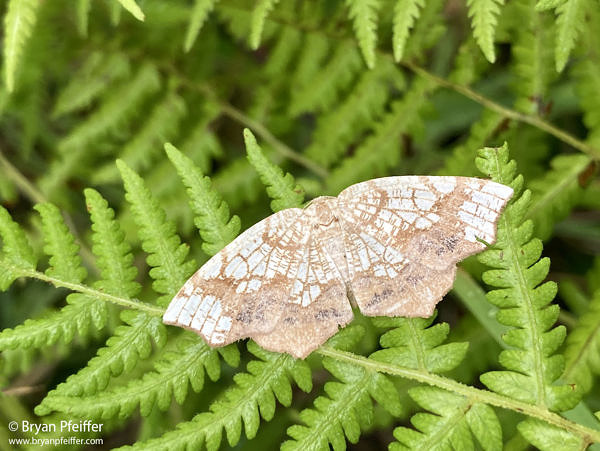
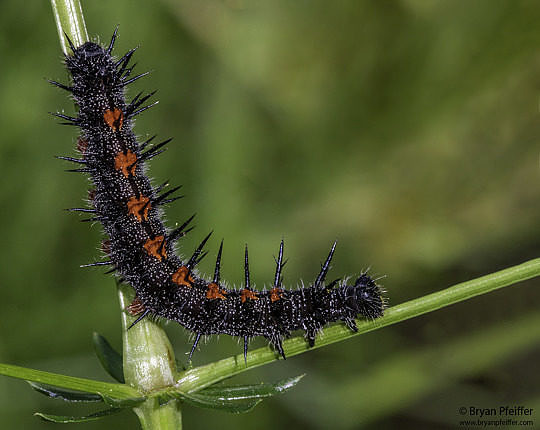
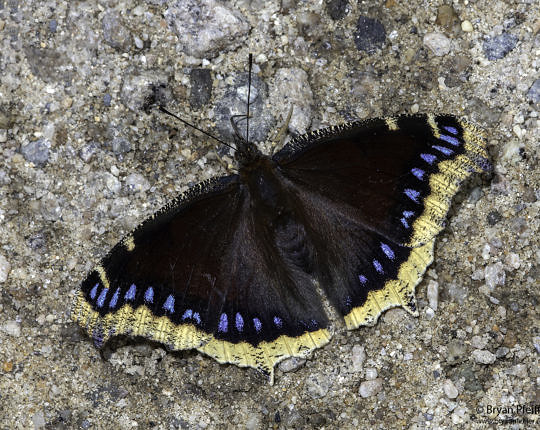
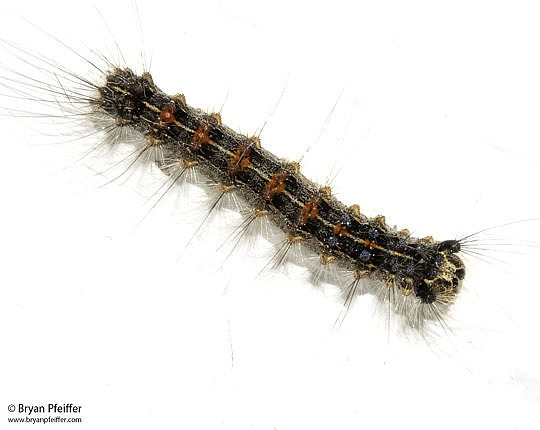
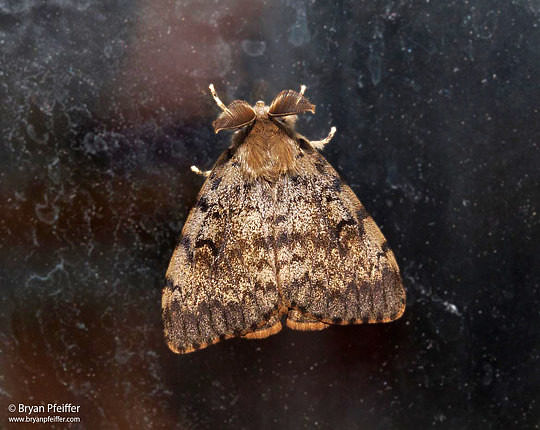
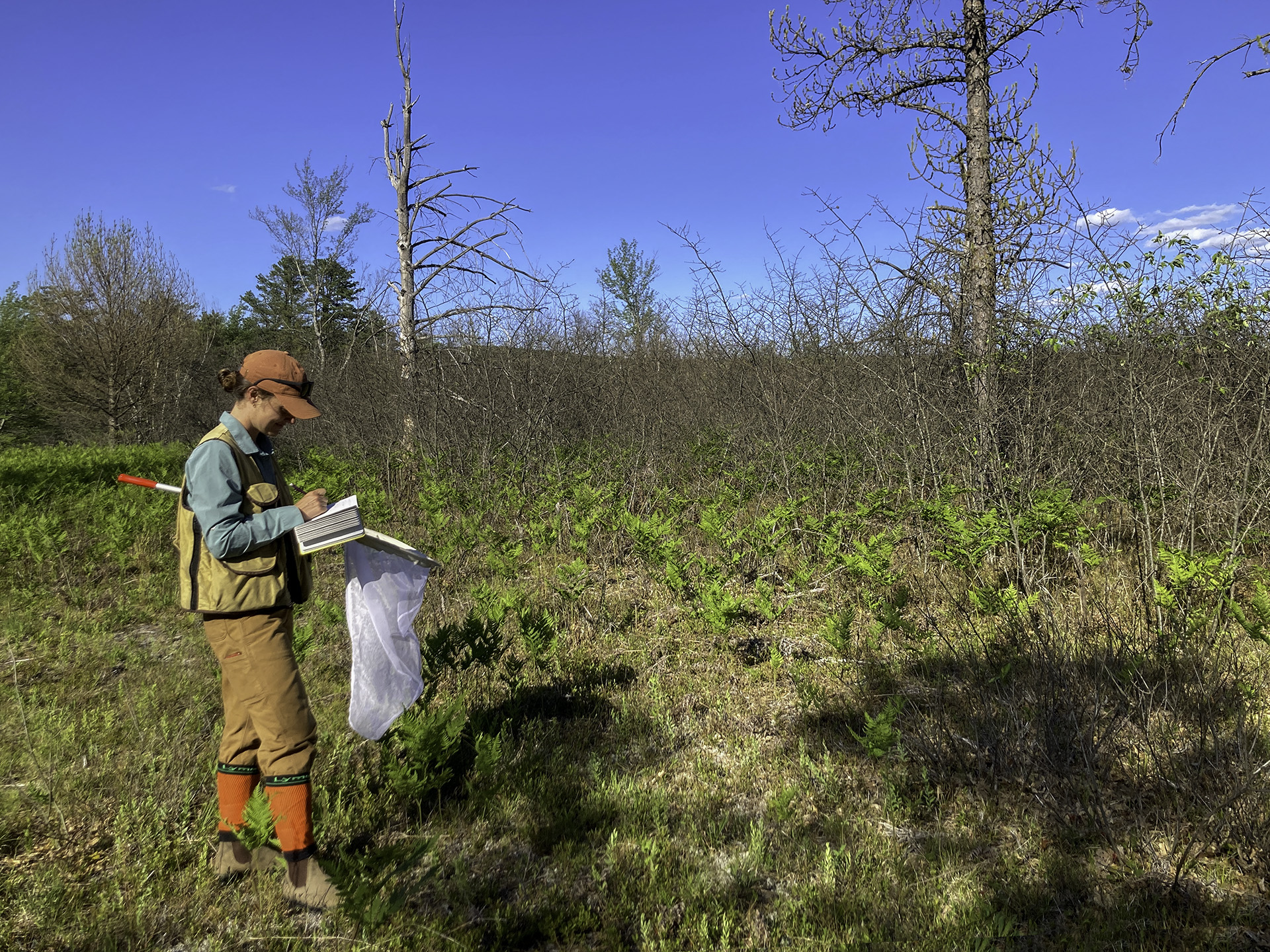

Are there any birds that eat these gypsy moth caterpillars or feed them to their young?
Hey Ann, and I hope you’re seeing and loving lots of nature as well! Thanks for writing about it and sharing it all these years!
Hi Bryan
Your photos and descriptions are terrific. Thank you for keeping us up to date. Hope ynour travels and even fsrom you back deck are very informative and accompanied by gorgeous and incredible photos.
Take care, Ann
Great to hear from you Sandra. Been a a long time.
Oh I love that Mourning Cloak (we call them Camberwell Beauty) a rare vagrant to the UK.
Informative and entertaining as usual, Bryan. Thank you!
I worked at a horse farm in the Hudson River Valley and I’ll never forget it was summer, there were no leaves on the trees, and it sounded like it was raining with the catepillar poop. It was really eerie and creepy and luckily the damage was temporary and the trees didn’t die.
Boy, do I remember gypsy moths. When living in CT, years ago, we were inundated with these pests. They made a mess, especially if your car was in the driveway under Oak trees. Before they turned into moths, we would put a layer of sticky stuff (can’t remember name of the stuff) around the mid section of a big old Oak tree in the back of our yard, the pests would come down from their nests in the tree and when ready to crawl up they would get stuck in the sticky stuff. So many trees defoliated but a lot of them grew back their leaves. Eventually the infestations stopped. Cannot remember why.
so glad to hear from you, Bryan! ooo, every now and then, there will be one of the green inchworms working his way up my arms! creepy, inchy! thanks! georgeann
I heard the VPR program on the Gyspy Moth and was chagrined to say the least. While I generally believe we need to live with the insects in our gardens to a certain extent, these caterpillars scare me. What can be done to stop them?????
Fran
Thanks for the cat chat. I needed that. And so good to hear from you, as always!
Yikes! That’s concerning. Isn’t Pitch Pine/scrub oak community a rare community/habitat in VT and NH as it is down here in CT? This should serve as a warning for us down here to look closer at our Pitch Pine / Bear Oak communities on inland sand barrens and Pitch Pine / Post Oak community along the coastal rocky headlands and atop our trap rock ridges. Many of our oak-dominated hardwood forests in eastern CT and western RI have already been defoliated in recent years and, coupled with drought, have resulted in high oak mortality.
Loved the blog post (once again). Thanks for sharing.
-Anthony